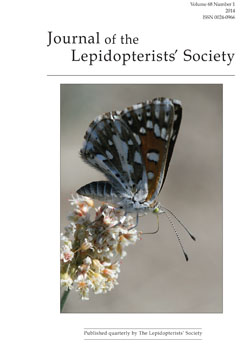Larvae of Arhopala zylda (Lycaenidae) feed on food bodies (FBs) produced by two Macaranga (Euphorbiaceae) myrmecophytic species, M. beccariana and M. hypoleuca. We examined their feeding behavior in detail via field observations and rearing experiments in the field and laboratory. Larvae of A. zylda fed only on FBs and not leaves during the first through third instars; during the fourth (final) instar, they ate both FBs and leaves of the host plants. The larvae actively fed on FBs on young leaves, which were always attended by many plant symbiotic ants. These results suggested that A. zylda larvae depend entirely on FBs for food, except late in the final instar, and that the FB-feeding habit is associated with special traits that enable the larvae to evade ant aggression, which usually functions as an effective anti-herbivore defense for the host plants.
How to translate text using browser tools
1 March 2014
Exploitation of Food Bodies on Macaranga Myrmecophytes by Larvae of a Lycaenid Species, Arhopala zylda (Lycaeninae)
Usun Shimizu-Kaya
ant—plant interactions
Borneo
Crematogaster ants
larval growth
myrmecoxeny





